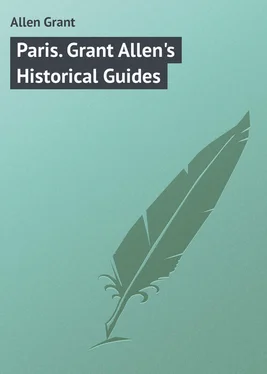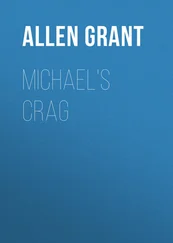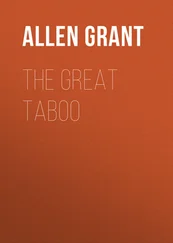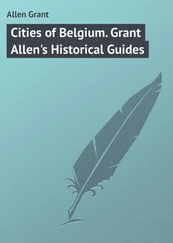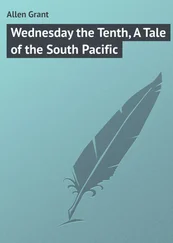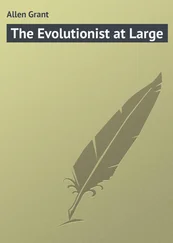Grant Allen - Paris. Grant Allen's Historical Guides
Здесь есть возможность читать онлайн «Grant Allen - Paris. Grant Allen's Historical Guides» — ознакомительный отрывок электронной книги совершенно бесплатно, а после прочтения отрывка купить полную версию. В некоторых случаях можно слушать аудио, скачать через торрент в формате fb2 и присутствует краткое содержание. ISBN: , Издательство: Иностранный паблик, Жанр: foreign_language, foreign_prose, на английском языке. Описание произведения, (предисловие) а так же отзывы посетителей доступны на портале библиотеки ЛибКат.
- Название:Paris. Grant Allen's Historical Guides
- Автор:
- Издательство:Иностранный паблик
- Жанр:
- Год:неизвестен
- ISBN:http://www.gutenberg.org/ebooks/49907
- Рейтинг книги:4 / 5. Голосов: 1
-
Избранное:Добавить в избранное
- Отзывы:
-
Ваша оценка:
- 80
- 1
- 2
- 3
- 4
- 5
Paris. Grant Allen's Historical Guides: краткое содержание, описание и аннотация
Предлагаем к чтению аннотацию, описание, краткое содержание или предисловие (зависит от того, что написал сам автор книги «Paris. Grant Allen's Historical Guides»). Если вы не нашли необходимую информацию о книге — напишите в комментариях, мы постараемся отыскать её.
Paris. Grant Allen's Historical Guides — читать онлайн ознакомительный отрывок
Ниже представлен текст книги, разбитый по страницам. Система сохранения места последней прочитанной страницы, позволяет с удобством читать онлайн бесплатно книгу «Paris. Grant Allen's Historical Guides», без необходимости каждый раз заново искать на чём Вы остановились. Поставьте закладку, и сможете в любой момент перейти на страницу, на которой закончили чтение.
Интервал:
Закладка:
Grant Allen
Paris / Grant Allen's Historical Guides
INTRODUCTION
THE object and plan of these Historical Handbooks is somewhat different from that of any other guides at present before the public. They do not compete or clash with such existing works; they are rather intended to supplement than to supplant them. My purpose is not to direct the stranger through the streets and squares of an unknown town towards the buildings or sights which he may desire to visit; still less is it my design to give him practical information about hotels, cab fares, omnibuses, tramways, and other every-day material conveniences. For such details, the traveller must still have recourse to the trusty pages of his Baedeker, his Joanne, or his Murray. I desire rather to supply the tourist who wishes to use his travel as a means of culture with such historical and antiquarian information as will enable him to understand, and therefore to enjoy, the architecture, sculpture, painting, and minor arts of the towns he visits. In one word, it is my object to give the reader in a very compendious form the result of all those inquiries which have naturally suggested themselves to my own mind during thirty-five years of foreign travel, the solution of which has cost myself a good deal of research, thought, and labour, beyond the facts which I could find in the ordinary handbooks.
For several years past I have devoted myself to collecting and arranging material for a set of books to embody the idea I had thus entertained. I earnestly hope they may meet a want on the part of tourists, especially Americans, who, so far as my experience goes, usually come to Europe with an honest and reverent desire to learn from the Old World whatever of value it has to teach them, and who are prepared to take an amount of pains in turning their trip to good account which is both rare and praiseworthy. For such readers I shall call attention at times to other sources of information.
These guide-books will deal more particularly with the Great Towns where objects of art and antiquity are numerous. In every one of them, the general plan pursued will be somewhat as follows. First will come the inquiry why a town ever gathered together at all at that particular spot – what induced the aggregation of human beings rather there than elsewhere. Next, we shall consider why that town grew to social or political importance and what were the stages by which it assumed its present shape. Thirdly, we shall ask why it gave rise to that higher form of handicraft which we know as Art, and towards what particular arts it especially gravitated. After that, we shall take in detail the various strata of its growth or development, examining the buildings and works of art which they contain in historical order, and, as far as possible, tracing the causes which led to their evolution. In particular, we shall lay stress upon the origin and meaning of each structure as an organic whole, and upon the allusions or symbols which its fabric embodies.
A single instance will show the method upon which I intend to proceed better than any amount of general description. A church, as a rule, is built over the body or relics of a particular saint, in whose special honour it was originally erected. That saint was usually one of great local importance at the moment of its erection, or was peculiarly implored against plague, foreign enemies, or some other pressing and dreaded misfortune. In dealing with such a church, then, I endeavour to show what were the circumstances which led to its erection, and what memorials of these circumstances it still retains. In other cases it may derive its origin from some special monastic body – Benedictine, Dominican, Franciscan – and may therefore be full of the peculiar symbolism and historical allusion of the order who founded it. Wherever I have to deal with such a church, I try as far as possible to exhibit the effect which its origin had upon its architecture and decoration; to trace the image of the patron saint in sculpture or stained glass throughout the fabric; and to set forth the connection of the whole design with time and place, with order and purpose. In short, instead of looking upon monuments of the sort mainly as the product of this or that architect, I look upon them rather as material embodiments of the spirit of the age – crystallizations, as it were, in stone and bronze, in form and colour, of great popular enthusiasms.
By thus concentrating attention on what is essential and important in a town, I hope to give in a comparatively short space, though with inevitable conciseness, a fuller account than is usually given of the chief architectural and monumental works of the principal art-cities. In dealing with Paris, for example, I shall have little to say about such modern constructions as the Champs Elysées or the Eiffel Tower; still less, of course, about the Morgue, the Catacombs, the waxworks of the Musée Grévin, and the celebrated Excursion in the Paris Sewers. The space thus saved from vulgar wonders I shall hope to devote to fuller explanation of Notre-Dame and the Sainte Chapelle, of the mediæval carvings or tapestries of Cluny, and of the pictures or sculptures in the galleries of the Louvre. Similarly in Florence, whatever I save from description of the Cascine and even of the beautiful Viale dei Colli (where explanation is needless and word-painting superfluous), I shall give up to the Bargello, the Uffizi, and the Pitti Palace. The passing life of the moment does not enter into my plan; I regard each town I endeavour to illustrate mainly as a museum of its own history.
For this reason, too, I shall devote most attention in every case to what is locally illustrative, and less to what is merely adventitious and foreign. In Paris, for instance, I shall have more to say about truly Parisian art and history, as embodied in St. Denis, the Île de la Cité, and the shrine of Ste. Geneviève, than about the Egyptian and Assyrian collections of the Louvre. In Florence, again, I shall deal rather with the Etruscan remains, with Giotto and Fra Angelico, with the Duomo and the Campanile, than with the admirable Memlincks and Rubenses of the Uffizi and the Pitti, or with the beautiful Van der Goes of the Hospital of Santa Maria. In Bruges and Brussels, once more, I shall be especially Flemish; in the Rhine towns, Rhenish; in Venice, Venetian. I shall assign a due amount of space, indeed, to the foreign collections, but I shall call attention chiefly to those monuments or objects which are of entirely local and typical value.
As regards the character of the information given, it will be mainly historical, antiquarian, and, above all, explanatory. I am not a connoisseur – an adept in the difficult modern science of distinguishing the handicraft of various masters, in painting or sculpture, by minute signs and delicate inferential processes. In such matters, I shall be well content to follow the lead of the most authoritative experts. Nor am I an art-critic – a student versed in the technique of the studios and the dialect of the modelling-room. In such matters, again, I shall attempt little more than to accept the general opinion of the most discriminative judges. What I aim at rather is to expound the history and meaning of each work – to put the intelligent reader in such a position that he may judge for himself of the æsthetic beauty and success of the object before him. To recognise the fact that this is a Perseus and Andromeda, that a St. Barbara enthroned, the other an obscure episode in the legend of St. Philip, is not art-criticism, but it is often an almost indispensable prelude to the formation of a right and sound judgment. We must know what the artist was trying to represent before we can feel sure what measure of success he has attained in his representation.
Читать дальшеИнтервал:
Закладка:
Похожие книги на «Paris. Grant Allen's Historical Guides»
Представляем Вашему вниманию похожие книги на «Paris. Grant Allen's Historical Guides» списком для выбора. Мы отобрали схожую по названию и смыслу литературу в надежде предоставить читателям больше вариантов отыскать новые, интересные, ещё непрочитанные произведения.
Обсуждение, отзывы о книге «Paris. Grant Allen's Historical Guides» и просто собственные мнения читателей. Оставьте ваши комментарии, напишите, что Вы думаете о произведении, его смысле или главных героях. Укажите что конкретно понравилось, а что нет, и почему Вы так считаете.
